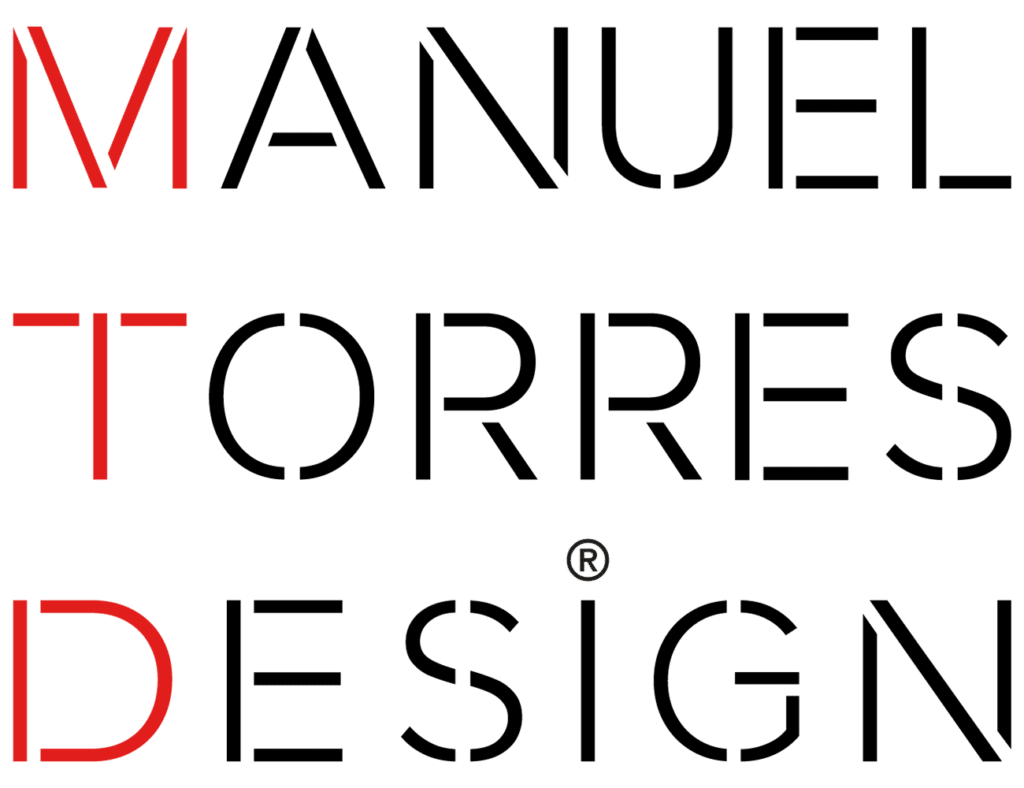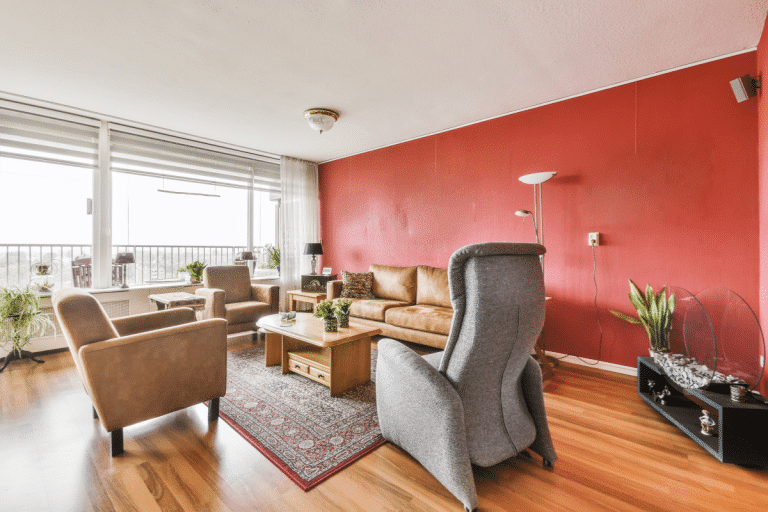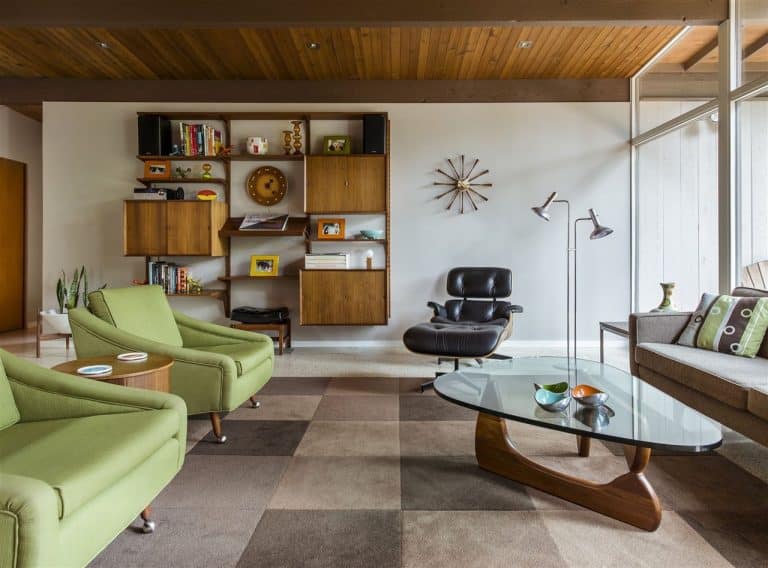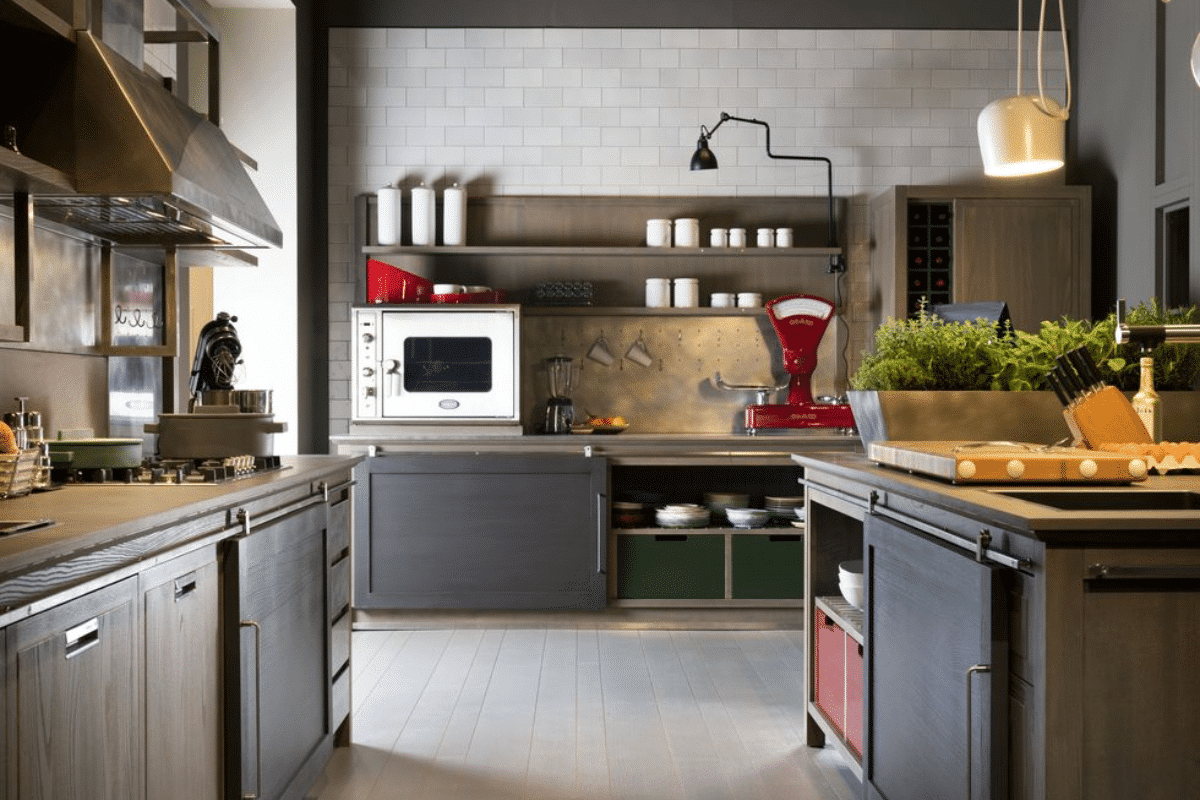The industrial style kitchen remains one of the most popular choices when it comes to deciding the look of this space. Both for its practicality and its timeless aesthetic, it tends to be the perfect option thanks to its combination of style and utility. The kitchen is one of the busiest and dirtiest spaces in the house, as it is often used with not always satisfactory results. Let’s say it’s a gastronomic laboratory where one should be able to experiment without always considering the effects of mixtures and whether they will leave a stain or not.
Hence, it is always chosen for something easy to clean, that is, simple, yet beautiful at the same time. The industrial style, born in the United States in the 1950s, achieves both objectives by being based on the interiors of factories or artists’ workshops of the time. Do you want to know how to achieve such a kitchen? We’ll tell you in detail in this post, but first, we have to take a little trip back in time to understand where the trend comes from.
The origin
Surely, between the clues we have given and the name of the style, you already have an idea of where the inspiration for this type of kitchen comes from. This style emerges from the factories of the 1950s, those that exposed all their internal structure because it was not important to cover it up. That was a place of simple work, and as such, it was not necessary to worry about its aesthetics; it had to be practical, that was the main concern.
These minimally decorated spaces were used in the post-Industrial period of 1945 to create loft-type houses for all workers. The United States was transitioning from an industrial economy to a service-based one, so it was necessary to find space quickly. The factories, which no longer had workers inside, became their homes. Nowadays, these types of houses are among the most sought after in the country.
That’s why not only the kitchen but the whole home can have this style, because that’s how it happened when it was born. However, this room seems to have a special connection with the aesthetics of those factories, as it has the ability to showcase this style much more, dominated by metal, brick, weathered wood, pipes, and machinery.
Exactly these points are what make this style current today. It can perfectly fit with today’s dominant trends, such as minimalism or the return to craftsmanship and handmade or inherited pieces (vintage). These combinations allow us to create very chic and current spaces capable of winning us over with their simplicity.

Key points
The principles of industrial style in kitchens are based on the aesthetics of that era, but applied to the present and the purpose of the space. The foundation is definitely minimalism; if it doesn’t serve a purpose, there’s no need to have it. Hence, lofts, which were created in factories, follow that pretext. In fact, the mindset of second use also comes into play, using objects created for one function for a completely different purpose, thus avoiding disposal if they could no longer serve their original function.
Perhaps that’s why this style has created such a trend, as it follows one of the main rules of the most current interior design: the return to nature and its respect, the sustainability of decoration, and the value of craftsmanship. This gives objects that were going to be discarded a new lease of life to become part of homes with new designs and functions.
Although the main objective is simplicity and having everything in sight, it’s best to analyze point by point its characteristics if you want to achieve the industrial style kitchen of your dreams:
Simplicity
Of course, this should be the first point to follow. Both materials and furniture choices should be guided by simplicity and utility. That’s why stainless steel is often used, for example, as it is a resistant and durable material. There’s no need to complicate things by hiding elements that shouldn’t be seen, such as pipes and gas, electricity, or water lines, as they help reinforce the industrial aesthetic due to the simplicity of thought. The kitchen of our project in Barcelona Forum is a perfect example of functionality, simplicity, and elegance.
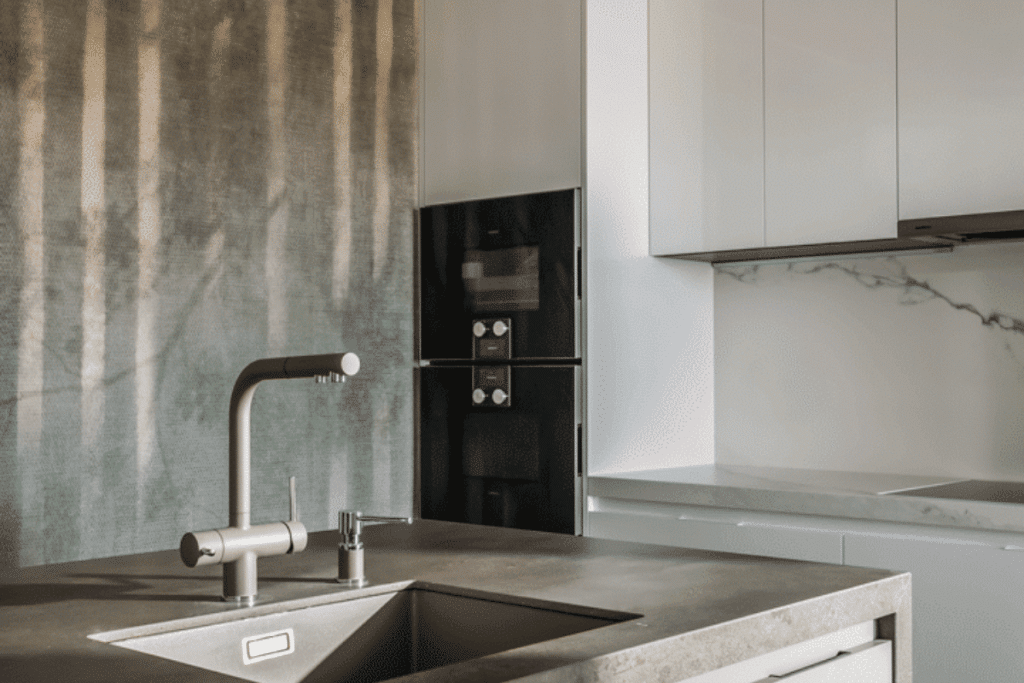
Play with materials
As strange as it may seem, since we have primarily talked about metals for this type of kitchen, wood also has a place in them through old or weathered wood in the form of beams, antique utensils, shelves, tables, chairs… There are hundreds of objects that can be the best addition to these kitchens and thus add a vintage touch to them. Any rough wooden surface, such as those with pronounced and blackened veins or knots, will also fit perfectly in these environments.
Laboratory look
In reality, kitchens and laboratories have much more in common than it seems: in both places, experiments are carried out to achieve a result that may not be expected, making the place a mess. That’s why materials are chosen in both spaces that are easy to clean and don’t stain. For example, you can use a central workbench with sink and workspace in the kitchen. Play around with the idea, you’ll surely be surprised by what can come out of such a mix. This kitchen conveys that feeling of cleanliness of a laboratory, it is sturdy and sterile.
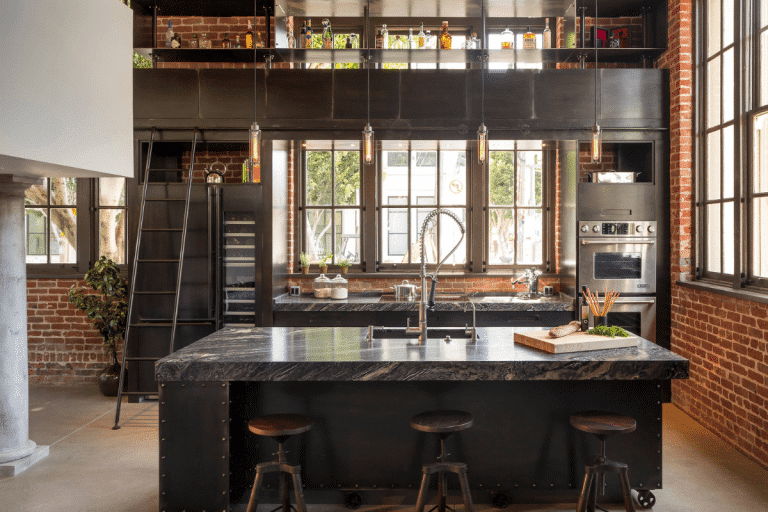
Add your personality
Of course, nothing makes sense if the space does not represent the inhabitants of the place. No matter how faithful you want to be to the original style, remember to put your essence in your kitchen. What do you want from it? Do you need an island or prefer something smaller? Are you going to have to install a dishwasher? All these little details represent you and you should take them into account when designing the space. It’s best to jot down all the things you desire and discuss them with the design team handling your kitchen.
Nakedness
As we’ve mentioned, this style allows elements that shouldn’t be seen to be visible and not attempted to be hidden. There’s a kind of need to show the true ‘face’ of a construction, defining an authentic and unapologetic style. That’s why everything is left raw unless, for health reasons, it has to be treated, such as the oxidation of metal elements.
Lighting
Lighting is one of the most essential aspects of the kitchen, as it’s necessary to be able to see properly to carry out all the tasks that arise in that space. In addition to that, the lighting you choose will also condition the industrial design of your kitchen. If you want to stay true to this style, pendant lamps are the ones that best represent it, especially if you hang them from a long thread or cable, making it seem like you haven’t bothered to choose something to cover the raw cable. To give it the final touch, use a large-sized bulb.
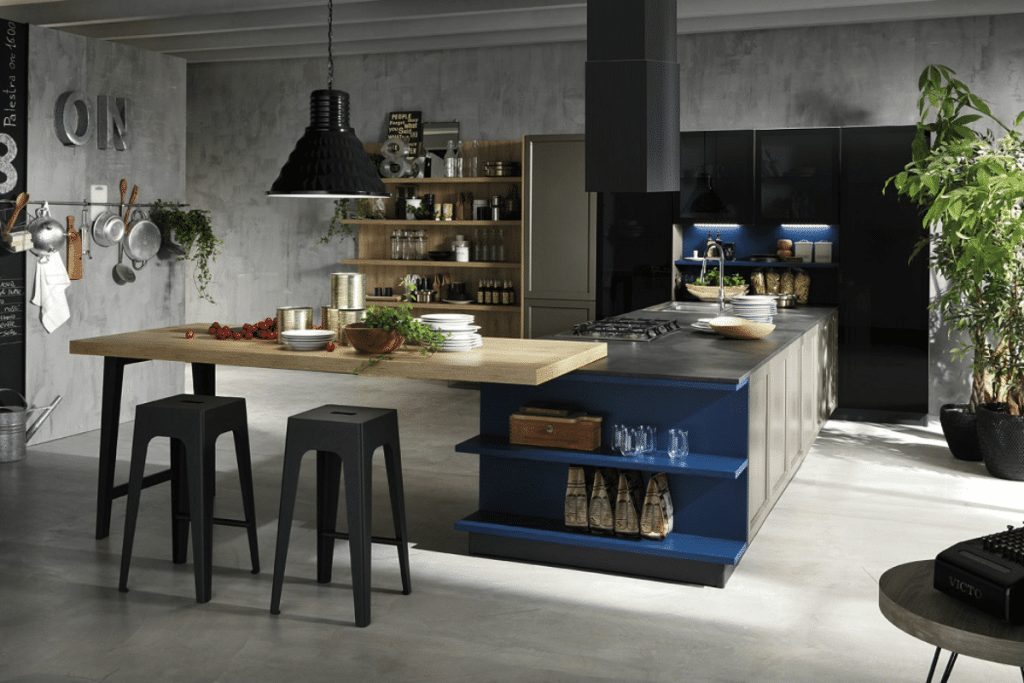
This light will give you a specific focus on the kitchen. If that’s not what you want or need, or if you’re looking for your kitchen to convey a bit more serenity, opt for dim lighting. Conversely, if you’re seeking contemporaneity, place bulbs with white tones or neons.
It’s always a good idea to place several points of light in a kitchen, depending on the areas that are most used for work. If you have an area in that space where you only eat with family or friends, you can choose a more yellowish light, like ambient light, to convey a cozy feeling.
Beyond gray
Although by material choice (metal, aluminum, stainless steel…) gray will be the predominant color, it’s not the only one we can use. We’ve already talked about using old or used wood to give a slightly warmer and vintage touch, but we can also perfectly add marble or stone by combining them with metallic elements to create a fusion of very interesting styles that fit perfectly. This is, in fact, one of the main premises of industrial design: playing with what you have so as not to buy anything.
Industrial Style and Contemporary
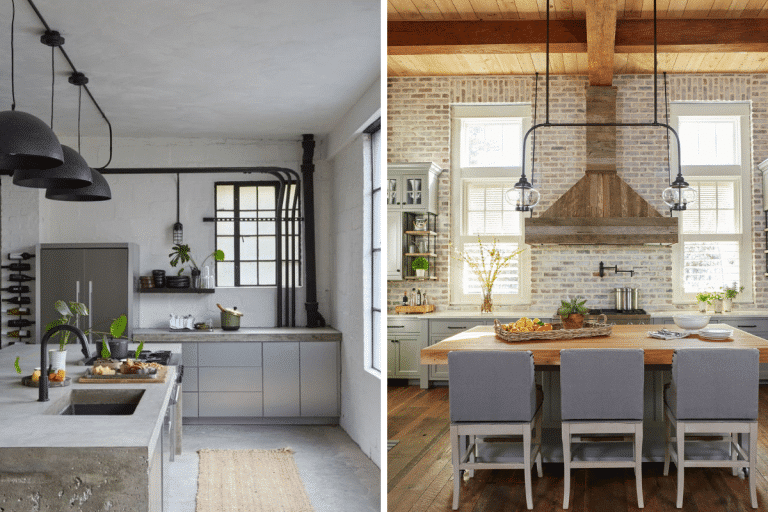
The practicality and cleanliness of industrial style kitchens make them irresistible for many people who seek a clean and simple kitchen. However, styles must evolve with the time they live in. Nowadays, industrial kitchens also have touches of color thanks to aromatic plants that fill the space with brighter colors, as well as transmitting all kinds of aromas.
As the goal is to make use of all the elements we have, we can also add more touches of color and originality with dishes or kitchen towels. Small decorative elements that will complete the kitchen and provide a personal and unique perspective. However, if you’re looking for a ‘pure’ industrial style kitchen, use decoration and utensils in neutral and very simple colors, nothing that deviates from the ‘norm’ or the standard.
The magic of this style is that it adapts very well to almost any type of fusion, being able to incorporate different decorative elements without both parts clashing. You can even go a step further and use vibrant colors and irregular shapes in glasses or jars, for example.
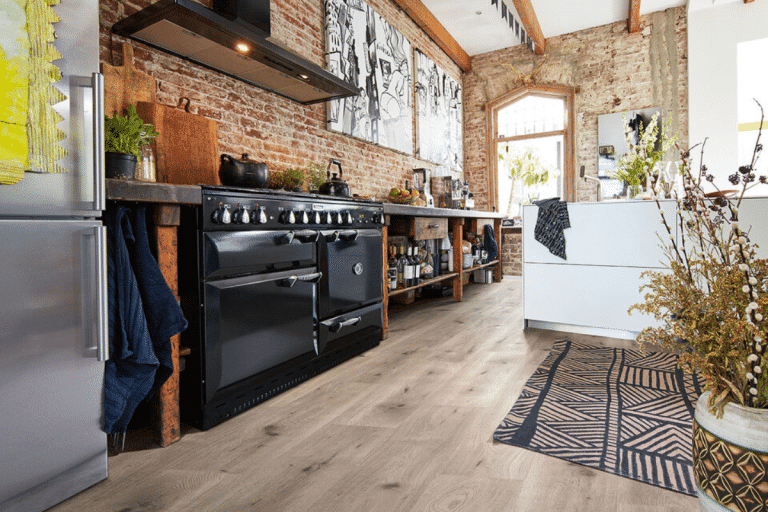
In the end, what matters is that you feel comfortable in your space. That it’s useful to you (especially in the case of a kitchen) and that it represents you. That’s why, at Manuel Torres Design, our goal is to offer comprehensive service with the highest quality, maximizing available resources and minimizing time in project execution.
Our priority is to always be at the forefront of design, innovation, new technologies, and home automation. In our design studio, we carry out projects and services for individuals, entrepreneurs, and companies. We anticipate your needs and offer you the best result. If you have any doubts or don’t know where to start imagining the kitchen of your dreams, you can contactus so that together we can help you bring all your ideas down to earth and make that vision a reality.
